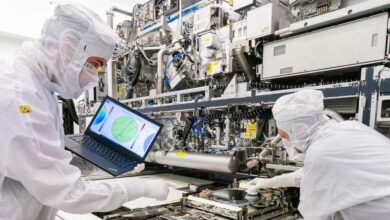Chandrayaan-3: India’s Space Journey Takes a Significant Leap with a Small Step to the Moon
The Success of Chandrayaan-3 will serve as an inspiration to the youth nationwide, conveying the message that conducting high-quality scientific research and making a significant impact is achievable right here, on Indian territory.

Chandrayaan-3 is currently progressing towards its destination, the moon, embarking on a 42-day journey. The spacecraft is maneuvering in an elliptical orbit, reaching a maximum distance of 41,762 km from Earth and approaching as close as 173 km. Over the next few days, it will ascend to approximately 220 km, conducting various tests and calibrations. Subsequently, the spacecraft will transition away from Earth’s gravitational pull and enter lunar orbit through a process known as translunar injection. As it enters lunar orbit, the spacecraft’s orbit will gradually decrease, bringing it closer to the moon. Ultimately, the mission aims to achieve a soft landing near the South Pole of the moon, commencing from a circular orbit positioned around 100 km above the lunar surface.
While the attention remains fixed on the critical phase of the soft landing, it is the preceding journey that presents significant challenges, akin to Ulysses’ arduous voyage to Ithaca. The anticipation and suspense will persist until August 23.
For the very first time, anyone who desired witnessed, through easily accessible platforms such as community screens, television sets, and mobile phones, the intricate launch process in remarkable detail. During the initial intense 1,000 seconds, everything proceeded according to plan. The liquid core ignited, propelling the spacecraft to an elevated orbit. Eventually, the innovative cryogenic engine, employing solid hydrogen and oxygen at temperatures as low as -200 degrees Celsius, further propelled the spacecraft to an even higher orbit, following which the satellite detached.
The enthusiasm of numerous school children in Sriharikota reverberated throughout school campuses, marketplaces, community areas, and homes across the nation. The atmosphere resembled that of a national cricket team triumphing in a pivotal match. What set this launch apart was the widespread availability of digital media, online discussions, and news dissemination since the pandemic. Everyone had the opportunity to watch, resulting in resounding cheers from all.
In 1957, when the Russians launched Sputnik, Vikram Sarabhai, the visionary behind India’s space program and the establishment of the Indian Space Research Organisation (ISRO), expressed his perspective. He stated, “There are some who question the relevance of space activities in a developing nation. To us, there is no ambiguity about our purpose. We do not harbor the illusion of competing with economically advanced nations in exploring the moon, planets, or manned space travel. However, we firmly believe that in order to make a meaningful contribution nationally and internationally, we must excel in applying advanced technologies to address the real challenges faced by humanity and society.”
The importance of Chandrayaan-3 within the Indian space program cannot be overstated. This mission represents a significant advancement in India’s lunar exploration endeavors and is poised to make substantial contributions to our knowledge of the moon. Furthermore, it will serve as a demonstration of India’s capabilities and enhance its standing within the global space community, consequently fostering increased investment in the country’s space industry.
It is evident that despite its capabilities, the private sector in India is currently involved in only a small portion of the global space industry, which is valued at around $500 billion. This situation necessitates a transformation, with the Indian industry aiming to emerge as a significant global participant in the space sector.
The recently introduced Space Policy 2023 by the government emphasizes the need to foster a thriving commercial presence in space within India’s space program. Chandrayaan-3 serves as a prominent illustration of how this objective is being realized, demonstrating how India’s space program is actively contributing to its achievement.
The mission represents a collaborative effort between ISRO and the Indian private sector, marking the first instance of such a partnership in a significant space mission for India. This collaboration highlights the government’s dedication to the newly implemented Space Policy. A consortium of Indian companies, in conjunction with ISRO laboratories, has developed the lander and rover that will be deployed on the Moon. Furthermore, ISRO, with industry assistance, has developed the mission’s ground control systems, and a substantial portion of the mission’s data will be processed and analyzed by the private sector.
India has joined the ranks of signatories to the Artemis Accords, a collaborative agreement among prominent space agencies, including NASA (US), ESA (Europe), JAXA (Japan), and CSA (Canada), with the aim of lunar exploration and potential colonization. By blazing a trail in this demanding domain, Chandrayaan-3 has the potential to guide future Artemis astronauts, leveraging ISRO’s groundbreaking efforts, in collecting crucial core samples and volatiles from these areas. Such accomplishments could greatly influence the course of deep space exploration and eventual commercial ventures.
Indian scientists are actively participating in several leading global initiatives that are pushing the limits of technology. In endeavors like the Thirty Meter Telescope project, collaborations at the Large Hadron Collider in CERN, and the nascent stages of the approved Laser Interferometric Gravitational Wave Observatory in India (LIGO-India) and the Square Kilometre Array in Radio Astronomy, India has tackled various hardware and software challenges. These accomplishments in the fields of astrophysics and space are now evident to the international community, showcasing India’s technological prowess.
As an astrophysicist, I am filled with anticipation for the anticipated scientific achievements of this undertaking. Given that the moon and Earth originated simultaneously and from similar materials, gaining insights into the moon’s formation and composition will significantly contribute to our comprehension of how our planet came into existence.
Among the nations that have achieved successful landings on the moon, namely the US, former USSR, and China, none have extensively explored the moon’s southern hemisphere. The significance lies in the fact that the lander of Chandrayaan-3 is set to touch down at a latitude of approximately 70 degrees south, in close proximity to the South Pole. This marks a momentous occasion because it opens up new possibilities for exploration and scientific discoveries in an uncharted region of the moon.
The lunar surface is characterized by numerous geographical variations that hold immense potential for exploration. Within the southern hemisphere, there are notable features such as towering mountains and deep craters, which possess more extreme characteristics compared to those in the northern hemisphere. These formations obstruct sunlight, resulting in vast regions of permanently shadowed areas near the poles where temperatures can plummet to -200 degrees Celsius. These regions harbor volatile substances, including water, which is believed to exist abundantly in the form of supercooled ice. These volatiles have the potential to offer valuable insights into the solar system’s history and evolution.
I am frequently questioned about whether a financially constrained country like India can allocate Rs 600 crore towards a lunar mission. However, this amount is comparatively modest when compared to the budgets of certain major movies and merely one-fifth the cost of a single Boeing-747 aircraft. Thus, the mission is not excessively expensive, and it presents additional opportunities for the country and local industries to generate significantly higher revenues through associated projects.
One crucial aspect to consider is that ventures like Chandrayaan-3 have the power to inspire and motivate the upcoming generation of scientists and engineers. Witnessing the radiant expressions on the faces of young individuals during the launch, at our campus, and in the streets was truly delightful. The triumph of Chandrayaan-3 will convey a powerful message to the youth throughout the nation, demonstrating that conducting high-quality scientific research and creating a meaningful impact is achievable right here, on Indian soil.




